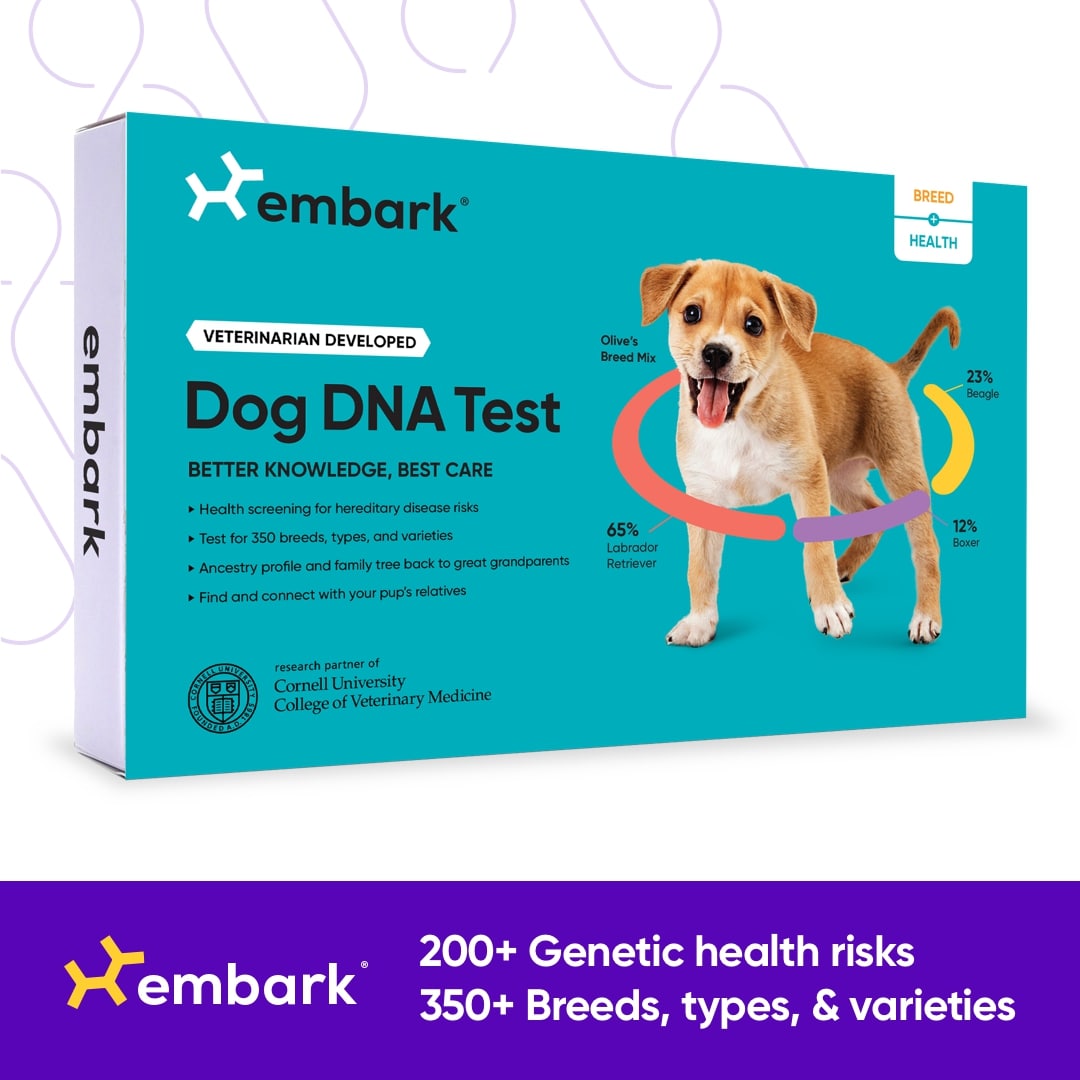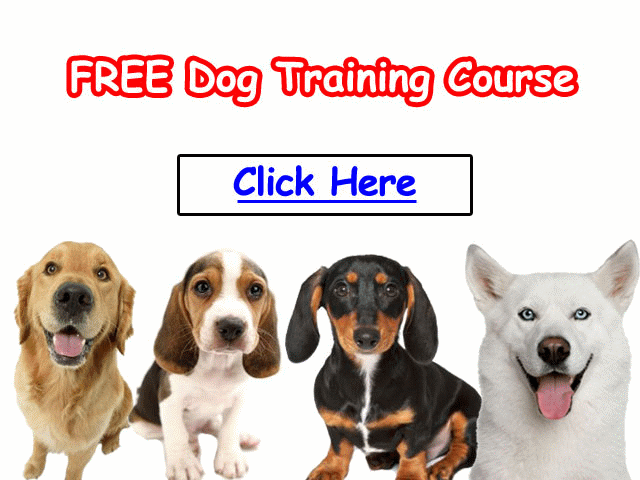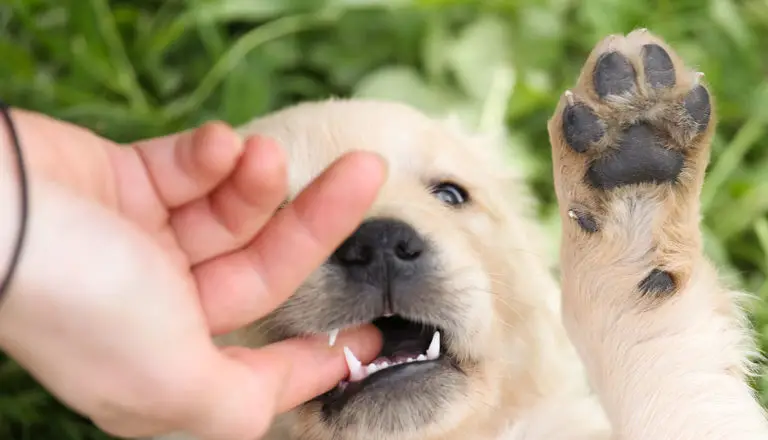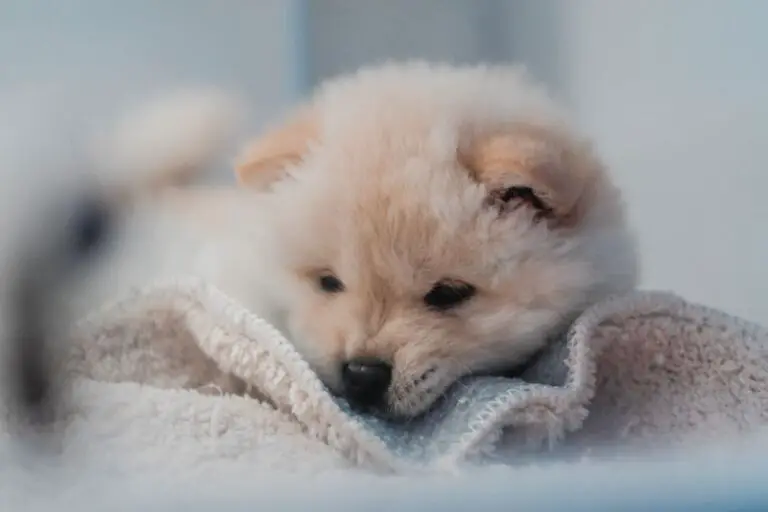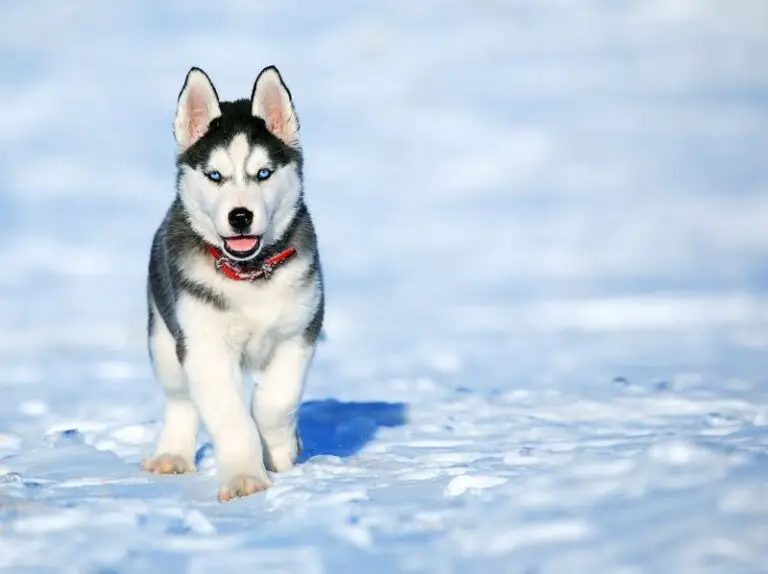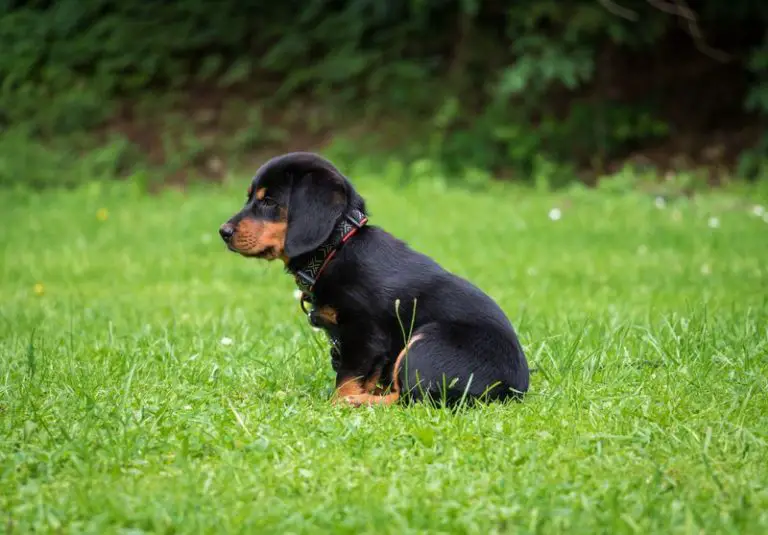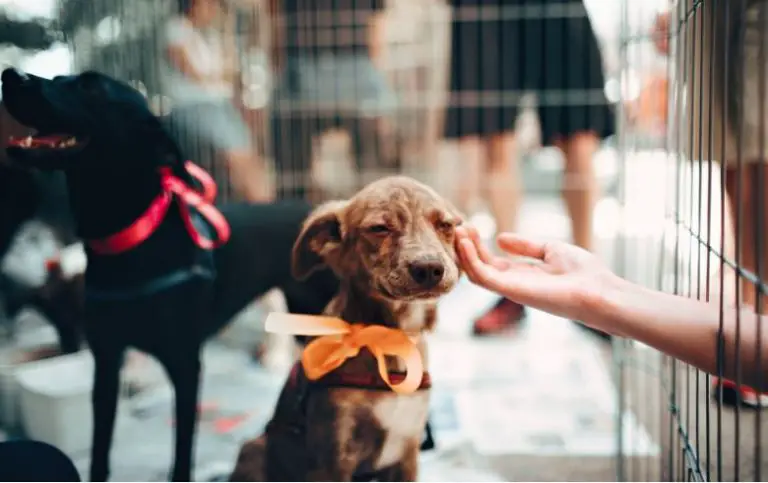How to stop food aggression in dogs using three fool-proof methods.
Natural instincts! The main culprit of why some dogs can be extremely aggressive and overprotective of their food. Dogs, as well as hundreds of other animals, possess behaviors that come to the surface whenever their food is at risk of being taken away. Many people think that the only way to learn how to stop food aggression in dogs is to send their dog to a dog trainer that’s going to charge hundreds of dollars all for your dog to redevelop the behavior as soon as the training ends.
Fortunately, food aggression or resource guarding in dogs is a bad behavior habit that anybody can teach their dogs to neglect.
DO NOT! I repeat DO NOT hire a dog trainer until you read this article.
Disclaimer: Although it is quite possible to train your dog to stop their food aggressive behaviors, some dog breeds will require more effort simply due to the fact that not all dogs are made the same. For example. a Pug may behave differently than a Golden Retriever when beginning to initiate their training.
There are many different causes that can encourage a dog to develop food aggression and there is an equal amount of ways to discourage your dog from developing food aggressive behaviors. With consistency, diligence, and a bit of effort on your part, you will be able to correct your dog’s food aggression with these easy-to-implement tips and tricks.
Signs of Food Aggression in Dogs
- Dogs lying with their paws over their food bowl
- Dogs taking their food to the favorite spot before eating
- Changes In breathing patterns (might hold their breath)
- Growling (when reaching towards their food bowl)
- Snapping or Barking (when reaching towards their food bowl)
- Overprotective of dog toys
- Crazy Eyes
- Lunging or jumping towards others
- Biting or Attacking if they suspect food will be taken away
Food aggression in dogs can be displayed in a wide variety of different ways amongst many different dogs. Not all dogs are the same therefore, not all dogs will display the exact same sign of food aggression.
Causes of Food Aggression in Dogs
Food aggressive behaviors in dogs can stem from a large number of different reasons. Here are some of the most common reasons why a dog may develop food aggression.
Competition
For many dog owners that only have one dog living in the household, you probably may never get to see the food aggressive side of your dog because for them, there really isn’t any competition. Well, unless you’re eating your dog’s food.
For households that feed multiple dogs at the same time you may come to realize that your dog takes their food eating to the extremes.
They can also be especially protective over their possessions.
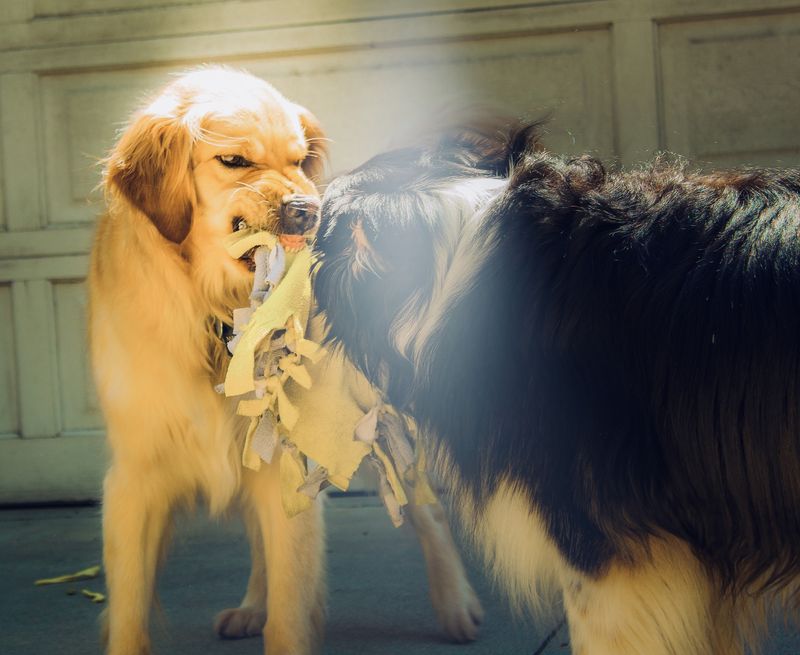
There is always competition for food in a house that feeds more than one dog. Although you may know that you are financially capable of feeding more than one dog, they don’t. To most mammals, they consider food to be the most valuable thing and, sometimes, it is the only valuable thing.
It is much easier to spot food aggression in dogs that get fed at the same time and out of the same bowl. Usually, in scenarios like this one, you may notice that the bigger, stronger dogs may be the aggressor here, leaving your smaller, weaker dogs left to find food elsewhere.
Humans may value houses, money, cars, but dogs, nope! They just want to be fed and to know where their next meal is supposed to come from.
Fear & Anxiety
This fear and anxiety that your dog may possess can stem from a variety of different things. The fear of going hungry, fear of their food being taken away by their owners, or some unknown forms of PTSD.
Dogs do also develop post-traumatic stress disorders from situations that may have occurred in their past and the memory of that day or time may elicit some aggressive behaviors that are shown when they are eating their food, playing with their favorite toy or when attempting to interact with any object or person’s the dog believes belongs to them
This behavior is more commonly known as resource guarding. Resource guarding in dogs is a behavior that causes dogs to portray somewhat aggressive behaviors and it is basically their way of saying “don’t touch this object, it is mine!
A sharp increase in fear of potentially losing the object they are trying to protect will trigger them to snarl, growl, show their teeth and in some cases, even bite you just to let you know that their possessions are not to be tampered with again.
Don’t worry training a dog to give up their resource guarding behavior works hand in hand with the techniques used to train a dog to stop their food aggression.
Already Aggressive Dog
Let’s face it! Some dogs are just labeled as being aggressive breeds. Although a dog can be an aggressive breed this does not mean that it is an aggressive dog. This also does not mean that aggressive dogs can’t be tamed.
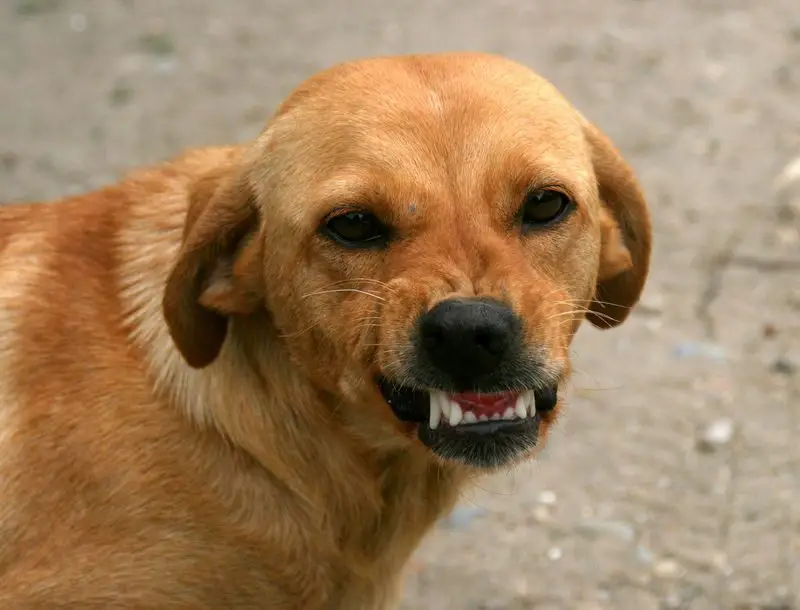
Any dog can be trained to perform exactly how you want them to. Aggressive dogs may require a few extra weeks in the lab for training and development but nevertheless, it is possible.
Some dogs that fall into the aggressive breeds category are German Shepherds, Rottweilers, Pitbulls, American Bulldogs, and Doberman Pinschers, just to name a few. These are generally larger, harder to control dogs.
If you are having a hard time trying to tame your aggressive dog, consider reading this article “best dog training for aggressive dogs”. This will help to guide you along the path to helping your dog get rid of their aggressive behavior in no time.
This is probably one of the harder causes of food aggression in dogs to fix. The reason is that the dog’s aggressive behavior is not just about food but rather, this is their personality. Attempting to change your dog’s personality will require a ton of time, energy, consistency, and a very strict daily training schedule.
It is best to prevent these behaviors in your dog at earlier stages in life if possible, as opposed to attempting to correcting it later on in the dog’s life.
Underfeeding
Feeding your dog very little food, not enough food, or feeding them at irregular times throughout the day can encourage your dog to become a little more cautious of other people or dogs surrounding them while they are eating.
This is a direct result of food scarcity. Your dog can begin to realize that the food you may have given to them does not come around very often therefore, they do everything in their might to try to protect the food.
This is basically a dog’s instincts telling them that they must fight in order to survive.
Food aggression due to underfeeding is more commonly seen in wild/stray dogs. The reason this behavior develops is that food for them is a rare but needed resource. They understand that they must fight for their food or starve to death.
Therefore, it is not uncommon for newly adopted stray dogs or underfed dogs to seem extremely overprotective of their food.
This type of food aggression (food aggression found in stray dogs) is one of the easier types to train against. All it takes is a little bit of time for the dog to realize that they no longer need to fend for themselves as they did before becoming a new member of the household.
It’s Their Favorite Food To Eat
If somebody lays a finger on my Butterfinger, it’s on! I’m pretty sure that’s what all dogs are saying when they keep on barking when it comes to their favorite foods to eat.
Well, that’s probably what I would be saying anyway!
Some dogs do show aggressive behaviors when it comes to certain types of foods. For example, kibbles may not be a dog’s favorite food but Milk-Bone might be. So, you may not notice any sudden changes in attitudes when it comes to eating their kibbles but you may notice a sharp increase in aggression when you give them their favorite treat, snack, or meal.
Usually, this type of food aggression comes from being eager and excited to eat. Unfortunately, some dogs may show their desire to eat in the form of aggression.
Teaching your dog to wait on their food and getting them to understand that nobody is going to take their food away can be a very helpful practice. This training has the ability to ensure dogs that their food will not be taken away, therefore they will allow you to come near them while they are eating without showing any signs of food aggression, resource guarding, or displaying territorial ownership behaviors.
Dog Food Aggression Training Techniques
Here are three very useful methods that anyone could begin implementing on their dogs to correct their food aggressive behaviors.
Positive Incentive (Treat Training)
Difficulty: Medium
Materials Required: Time, Durable Dog Bone or Dog’s favorite Chew Toy, Training Treats
Training Time Required: 30 mins per day
Time until completion: 2-3 Weeks
Positive incentive training involves providing your dog with either their favorite treat or favorite toy whenever they perform an action or complete a task that was requested of you.
It simply works by giving your dog a command such as sit, then rewarding them with a treat after they sat down.
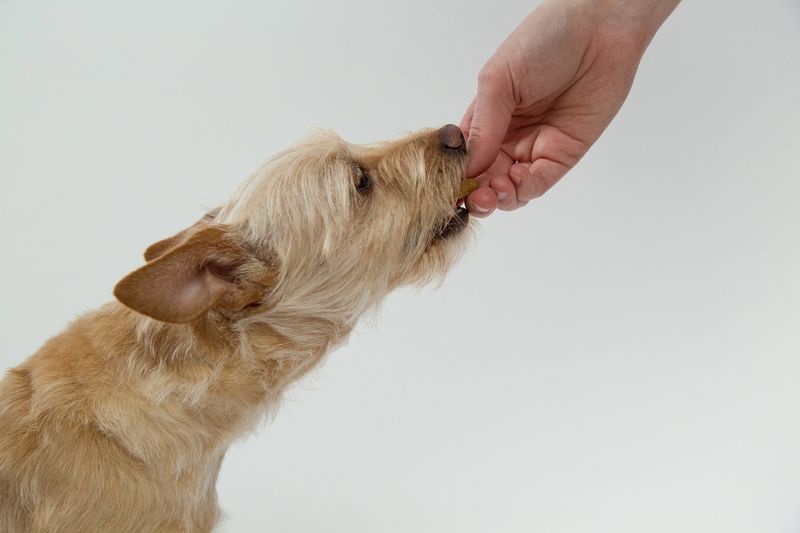
When it comes to using positive incentives to tackle food aggressive behaviors in dogs it may seem a bit counterintuitive because you are essentially asking your dog to give up their food and take your treat in return.
So how does this actually help to stop your dog from being food aggressive?
Here’s what you need to do
Step 1: First, you need to give them something to be protective over. For this, I recommend Pet Factory Chews (link to Amazon) or a hard-to-chew through chew toy. It has to be something they won’t scarf down in two seconds in order to conduct the training.
Step 2: Get a hold of some training treats. The training treats will be used as the trapping device in order to lure your dog away from the bone or chew toy they’re protecting.
Step 3: As your dog begins to chew on the bone or play with their toy you must instruct them to drop it. Instruct them by using a strong, commanding voice that lets your dog know who’s in charge here. Chances are they’re just going to look at you and pay no attention to what you’re saying.
Step 4: After giving the command, offer them the treat as an exchange.
Step 5: As they go to retrieve the treat, slowly reach to take back possession of their bone or chew toy. By doing this you show the dog that the object is out of their possession and that you are now in the control seat.
Please be cautious. Have a sense of your dog’s food aggression levels. Do not attempt to do this with a dog that you suspect may attack you even after you maintain control over the object.
Step 6: Hand the object back over to your dog while keeping it in your hands. You need to keep control over the object. By doing this, your dog will believe that the object belongs to both of you as opposed to it being just theirs. Allow them to chew on it.
Step 7: Make another command to your dog that expresses that they need to let go. “Drop it”. Offer another treat.
Step 8: Repeat this process over and over for about 30 mins a day. You can expect to see significant changes in your dog’s aggressive attitudes in 2-3 weeks of implementing this training.
You will notice that after completing so many rounds of repetition your dog will inevitably learn to drop the object they were once being so aggressive over without even thinking about it. Just having many successful repetitive training sessions will eventually discourage their food aggressive behaviors.
Below is a short video that demonstrates other ways to properly follow the positive incentive (treat training) method:
Developing Food Training Schedules
Difficulty: Easy
Materials Required: Time & Dog Food
Training Time Required: Depends on your dog
Time until completion: 1-3 months
A food training schedule is simply a schedule that you create to remind you when your dogs need to be fed based on their age, size, and breed type. Here is a snapshot of a food training schedule that I have created for my three dogs that you can use to help you create one for your dog:
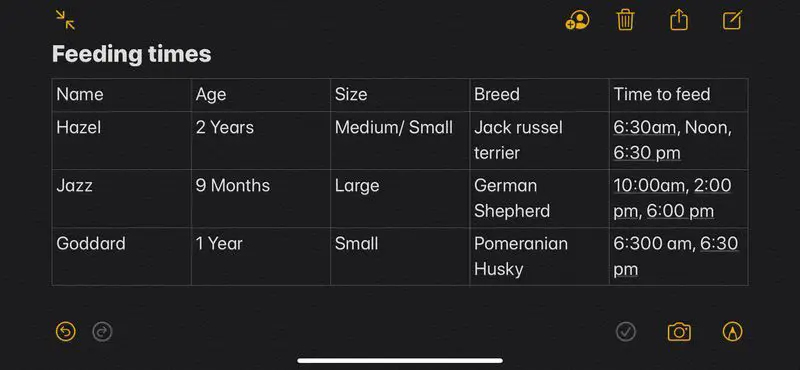
Benefits of developing a food training schedules:
- Reminds you of the best time of the day to feed your dog
- Prevents underfeeding your dog
- Reduces the chances of developing food aggression
- Reverses the effects of dogs with food aggressive behaviors.
Another way you can follow a strict food training schedule with less work for you is getting an automatic pet feeder. I recommend using the Arf Pets Automatic Pet Feeder because it allows you to set a very specific time for your dog to eat. It automatically dispenses your dog’s food at whatever time you set it at without you having to worry about the hassle involved.
Temperament Correction Collars (Training Collars)
Difficulty: Easy
Materials Required: Dog Training Collar (link to Amazon) and Dog’s favorite Chew Toy
Training Time Required: 15 – 30 mins per day
Time until completion: 1-2 weeks
Using training collars on your dog can be a sensitive topic for some dog owners. Do what is comfortable for you and your pet. That being said, there’s the process:
Step 1: Install the training collar around your dog’s neck. It should not be too tight that your dog is having trouble breathing and it should also be set to the lowest setting possible in order to ensure you don’t mistakenly injure your dog.
Step 2: While your dog is playing with their toy, instruct them in a stern and commanding voice to hand it over. Like before, your dog will likely look at you like you’re crazy.
Step 3: After instructing them with the command to hand it over, you must use the remote control that the collar comes with to activate the collar. Be sure to have the collar to produce a vibration/tone as opposed to producing a shock. The vibrations will startle your dog and immediately get them to stop snarling or growling at you when you reach for their food.
Step 4: Repeat these steps over and over until your dog’s food aggressive behavior stops completely.
This process can take anywhere from 1 – 2 weeks on average to fully train a dog to stop food aggression. Please do not abuse this method as the effects of the vibrations may dwindle the longer and the more often it is used.
After some time has passed of using this method, you will no longer be needing to use a training collar to notice a tremendous improvement in your dog’s behavior.
Food Aggression in Puppies
Food aggression in puppies is one of the easiest challenges to address because your dog will still be very young, and it will be much easier to create an impression on them. Although, it is better to prevent a dog from becoming food aggressive as opposed to attempting to stop or reverse the effects of food aggression in dogs.
Early Signs of Food Aggression in Puppies
- Barking at you whenever food is involved
- Snapping or lunging at you
- Growling occurs if approaching their food bowl
- Facing you while eating
- Sudden changes in breathing patterns when eating around others
Do Puppies Grow Out of Food Aggression?
Yes, puppies can grow out of food aggression. Under some rare occasions where multiple dogs are in a household, dogs tend to hold on to their food aggressive behaviors much later on in life.
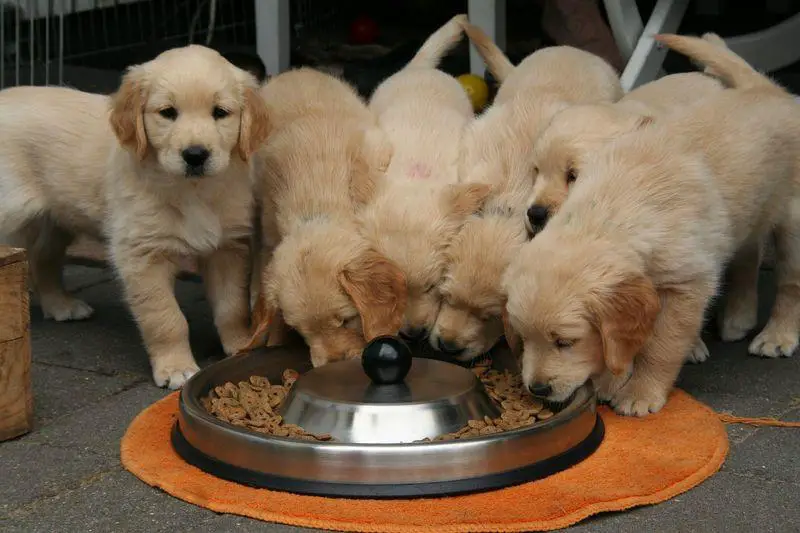
This is especially seen in dogs that are litter mates that share one large communion bowl. Some puppies, on the other hand, will require some training in order to stop being food aggressive.
Dog To Dog Food Aggression
Like before, dogs that are fed out of the same communion dog bowl will have a higher chance of developing food aggressive behaviors to humans as well as other dogs, such as their littermates.
This practice will encourage dogs to out-eat others and will lead to arguments about who the bowl belongs to. This is an example of alpha dog dominance.
What Not To Do Help Your Dog’s Food Aggression
Do not take their food away. Taking a dog’s food away will leave them to believe that whenever they see food, they must scarf it down as fast as possible before someone comes to take it. This is essentially the root cause of food aggression in dogs. Allow your dog to eat their food in peace.
Do not feed multiple dogs out of the same dog bowl. This is known as communion feeding. In situations like this, dogs will tend to push other dogs away or fight them in order to display dominance to alert other dogs that this food belongs to them. This practice increases the likeliness of developing food aggression.
Never attempt to grab food out of a dog’s mouth. Serious injuries may occur.
Do not get into a shouting match with a dog that is protecting their food bowl. This will only provoke them further to anger and slow down the process of getting them to stop being food aggressive.
Do not hire a dog trainer! Dog trainers tend to charge an arm and a leg to dog owners to solve a problem that does not require much training. Only lazy dog owners should take this route. Your dog needs to have this training experience with you. This is the only way they can learn to respect you, your authority, and not just that of a dog trainer.
Conclusion
Do not rush the process! Dogs need to be trained daily and effectively. With time, you will notice an overall improvement in your dogs’ attitudes towards their foods.
I hope that this article has been helpful, insightful and has brought you the answers that you were looking for to help discourage or reverse the food aggressive behaviors your dog may be displaying. Remember, these things take time.
Here are some helpful, handpicked articles that can help you along your dog’s training journey down below:

